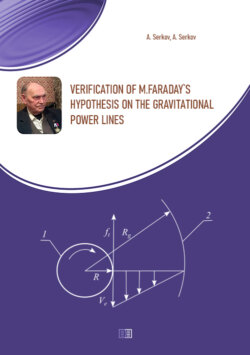Читать книгу Verification of M.Faraday's hypothesis on the gravitational power lines - А. Т. Серков - Страница 17
Chapter 3. The dependence of planetary and satellite distances from the speed rotation of the central bodies
ОглавлениеSummary
In Chapter an attempt is made to determine in the equation of planetary and satellite distances the universal constant, which would unite planetary and satellite systems and allow with sufficient accuracy to calculate the elite orbit. To the solution of the problem has been approached through the use of complex representing the square root of the product of the mass of the central body of the system and the period of its rotation.
1. Introduction
The analysis of the dynamic structure of the Solar system, made in the work of B. I. Rabinovich [1], has brought to the fore the problem of stability of periodic motions in systems with commensurate frequencies, which are closely linked to the existence of elite orbits in planetary and satellite systems. A priority issue in this problem is the establishment of the laws of planetary and satellite distances. The author prefers the proposal made earlier by A. M. Chechelnitsky [2], according to which the radii of the elite orbits of planets and satellites Rn determent by quartos law:
Rn = k n2, (1)
where k is a constant and n is an integer number that determines the position of the elite orbit.
The proposed law, in contrast to empirical rules Titius-Bode [3] more accurately describes the dependence of planetary and satellite distances for all systems. In addition, it allows detecting the quantum properties of the gravitational planetary systems.
On this occasion, F. A. Gareev writes [4]: "In the framework of the considered model it is possible to conclude that in the Solar system quanthouse sectorial and orbital velocity and orbital distances of the planets and their satellites". The author on the basis of the equation (1) for planetary and satellite systems received constant (h/mG) is the quantum double sectored speed. The value of this constant for the different systems is presented in table 1. According to the author's constant satisfactorily within ±5 % remains constant for the same system. However, between the difference reaches 5 decimal orders of magnitude.
Table 1. The values of the constants (a/mG) for planetary and satellite systems and its relationship with the rotation parameters of the Central bodies systems.
This article in the framework of representations arising from law formulated in equation (1), an attempt is made to establish a universal constant, which would unite planetary and satellite systems. When this work has taken into account the statement of Alven H. [5], "the emergence of an ordered system of secondary bodies around the primary body – whether it be the Sun or a planet, definitely depends on two parameters initial body: its mass and speed".
2. Orbital distance for satellite systems
To establish the relationship between constant k and rotation parameters of the central bodies of planetary and satellite systems were calculated constants for planetary systems, and systems of Jupiter, Saturn, Uranus and Neptune. Table 2 shows the calculated values of k, for the planetary system, calculated by equation (1). The values of n for the calculation were taken from the work of F A. Gareev. The obtained average value of the constants k= 6,28∙1011 cm with standard deviation of 0.49∙1011 cm. Also the dependence of planetary distances from the squares of integers represented in Fig. 1, which confirms the correctness of the values of the integer n.
Fig.1. The dependence of the orbital distances rn in the planetary system from squares of integers n
Table 2. The values of the constant k in equation (1) for the planetary system.
Similar calculations were done for the satellite systems of Jupiter, Saturn, Uranus and Neptune. In table 3 and Fig.2 shows the data for the satellite systems of Jupiter. The system has 63 satellites. Many rely on close orbits and were therefore combined into groups. For example, in orbits with an average distance 23813∙108 cm turns 28 satellites. All of them are given one quantum number 29.
In the system of Jupiter are 32 elite orbits, which are comparable with the planetary system, where they are 30. The constancy of the constants k observed satisfactorily for all orbits except the first two quantum numbers 2 and 3. The average value of the constants k = 28,6∙108 cm with standard deviation of 0.3∙108 cm excluding the first two orbits, deviations from which are outside the statistical sample. The dependence of the orbital distances in the satellite system of Jupiter is given also in Fig.2.
Graph expressing this dependence was used to determine the values of the quantum numbers n. All experimental points, expressing the satellite or group of satellites with the same orbital distances satisfactorily fit to a straight line, as required by equation (1). Each orbital distance on the ordinate corresponds to the value of n2
